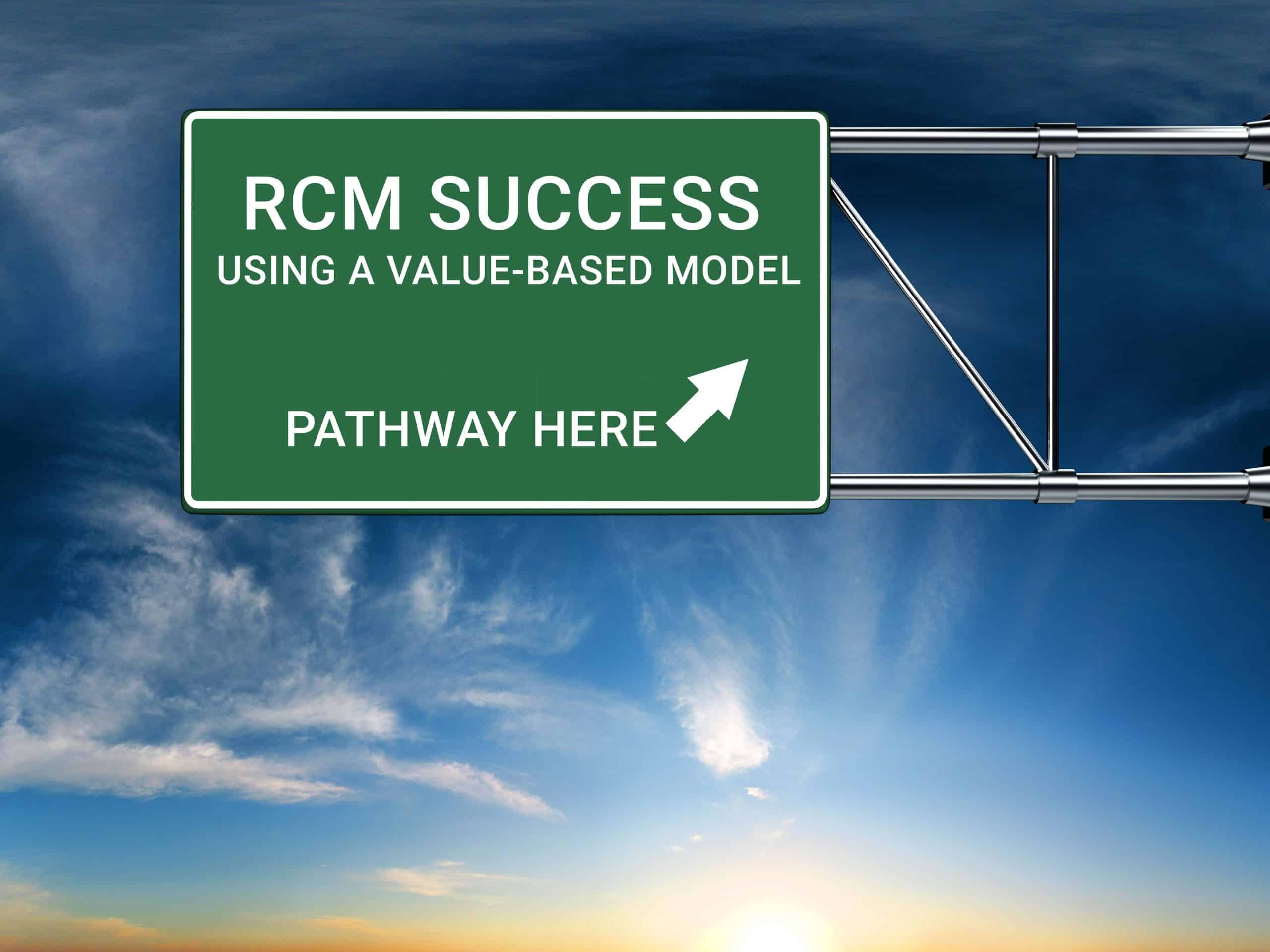Every day, increasing numbers of healthcare providers are transitioning from strictly fee-for-service medical reimbursement models to value-based payment.
The trend represents a much-needed, positive turn as evidence-based studies have shown that a value-based reimbursement framework results in improved quality of care, better health outcomes, and cost savings for all parties in the long run.
However, the value-based model is relatively new and the details of adapting the revenue cycle management (RCM) process have yet to be sorted out in a way that can be streamlined and replicated across and between organizations and providers.
As we continue to advance healthcare and work toward a streamlined healthcare system with a focus on treating the entire patient rather than the acute symptoms, finding a pathway through revenue cycle management is among the first steps.
Article Highlights
- Value-based payment models are shifting healthcare revenue cycle strategies from volume to quality and outcomes.
- Traditional fee-for-service billing practices must adapt to account for performance metrics, patient satisfaction, and care coordination.
- Healthcare organizations must invest in data analytics and reporting tools to track quality measures and support value-based reimbursement.
- Strengthening care management and patient engagement is critical to success under value-based contracts.
- Proactive RCM adjustments help organizations maintain financial stability while delivering high-quality, patient-centered care.
New Challenges of Revenue Cycle Management
Revenue cycle management takes into account the entire financial side of a patient’s continuing care, including critical documentation. Managing RCM successfully is the key to keeping the lights on for any healthcare organization. Optimal RCM can set up an organization and its patients to thrive.
RCM in a fee-based framework is difficult enough from an administrative perspective. Not only do RCM professionals have the heavy responsibility of ensuring data is aligned perfectly to obtain reimbursement, but also meticulous records must be kept in order to rectify any denied claims. If reporting and billing is not done correctly in the beginning, your team will spend an additional 20% more time fixing the issue later.
A value-based system requires additional record keeping, complexity, and steps. However, tracking a patient’s improvement or decline is significantly more challenging within a value-based model and the ability to track and access that meaningful data and report on patient progress is far more complex than in the prior fee-based system.
Despite the numerous benefits to patients and providers of shifting to a value-based model, many healthcare organizations are slow to make the change due to the added administrative burden. Because qualitative healthcare is so difficult to measure and track, the revenue cycle management team has a challenging task.
Indeed, tracking the metrics necessary for value-based reporting and reimbursement is not something you can simply throw a code at. Rather, you need to know the limits and specifics of your own contracts. It is also crucial that your organization has an overarching plan for when issues around the intricacies of managing value-based patient care come up, including policies, procedures, desktop workflows, and capturing all the necessary information on the claim before it goes out the door so that you do not have to double back to replicate work if a claim is denied.

Overcoming the Challenges of Value-Based RCM
As we move forward together in a shared mission of creating a more cost-effective, proactive, and holistically healing healthcare system, we must also collaborate to overcome the challenges and finer complexities in a value-based reimbursement model.
Overcoming the challenges of value-based revenue cycle management requires being aware of the most intricate and complex factors that require innovative solutions in order to make the model and RCM responsibilities successful.
While the actual execution of the endeavor is multi-faceted and cannot be simplified to a few words, there are five key categories of planning and strategy that must be considered.
Five Key Categories of Planning and Strategy for Valued-Based RCM
Capitated Contracts
Value-based care contracts are exceedingly complex and, for many healthcare organizations, they represent new territory. Understanding how capitated contracts work and which factors to watch out for is the first step in assessing the costs and benefits to your organization.
For example, in some cases, the contract rate will come in different types and styles from the payers. Some will be purely per member, per month (PMPM) capitated contracts and others will be based upon built-in benchmarks that must be met before payment is made.
Understanding the differences between them and which contracts your organization is working with is imperative to predicting and managing revenue.
From a budgetary standpoint, certain capitated contracts can make predicting cashflow extremely difficult.
Financials & Reimbursement
Tracking financials in a value-based payment framework is far more complex than on a fee-for-service model. While fee-for-service financial management can hardly be called “simple,” there is a comfort in the concept of linear billing and reimbursement.
On the other hand, value-based healthcare is anything but linear. As we move toward the value-based model, keep in mind that the tools, systems, and workflows you used in the days of fee-for-service will no longer apply.
Rather, your healthcare organization will likely need to create an entirely new system to track patient progress, contractual reimbursements, incentive payments, improvement and decline effects on billing, interest payments, as well as the standard codes for patient care, which will likely remain indefinitely.
Workflow Management
Expanding from financial workflow adjustments, there will also be significant patient care workflow adjustments to implement.
After decades upon decades of pressure to serve more patients, as well as growing population numbers, healthcare providers have been forced to shorten the amount of time they are able to spend with patients.
However, with a value-based system, the healthcare industry as a whole is taking a large step toward improving the system in order to serve patients better and improve health outcomes.
Thankfully, the value-based payment model encourages physicians to get to the root of the patient’s problem in order to provide higher quality care. While patient quality of life and longevity are at the forefront of every physician’s priorities, now the financial model matches by providing greater reimbursement for the organization when patients thrive.
While the ripple effect from this shift in physician workflows will inevitably affect the systematic and electronic workflows in place, these changes will also force the RCM team – including claims and billing specialists – to clarify, collect, or change additional information, which will demand a greater understanding of what insurance plans need in order to get successful claims processed.

Reporting
Finally – and perhaps most complex – a value-based care model will require vastly different reporting in order to receive reimbursement, remain compliant with regulatory bodies, and prove the foundational principle is being achieved; that is, improved health over a long-term period.
In fee-for-service models, reporting is largely quantitative. However, value-based care also includes the evaluation and reporting of qualitative metrics.
Qualitative metrics are notoriously subjective and difficult to track. However, by modeling value-based care reporting on the most successful longitudinal qualitative studies in healthcare and tangential fields, we can certainly reach not only a viable reporting system, but a prolific one.
The Next Step for Your Organization
As with any revolutionary change, while we sort out the details, test hypotheses, and carve out new paths, we must all focus on what unites us: advancing healthcare for the sake of improved patient care and health outcomes.
We can begin to find new pathways forward by examining similar models that have already been tested in some form. For example, state Medicare and Medicaid organizations have experimented with programs similar to value-based systems.
Evaluating their methodologies – whether they were successful or not – can garner valuable insights with regard to capitated contracts, financials and reimbursement, workflow management, and reporting.
Moving to a value-based payment system may seem like an overwhelming, insurmountable challenge, but it is possible. The ultimate goal is to advance healthcare, improving the overall quality of care, and treat the underlying issues patients are suffering from, not just the symptoms.
Do you need help shifting to the value-based payment model in your organization? If you want to implement a process that will support you and your staff to improve outcomes and reduce costs, contact us today.
Ready to Talk?
Related Articles

The 5 Revenue Cycle Metrics Ambulatory Clinics Can’t Ignore During Peak Demand

Healthcare Performance Improvement: Proven Strategies for Operational Efficiency


